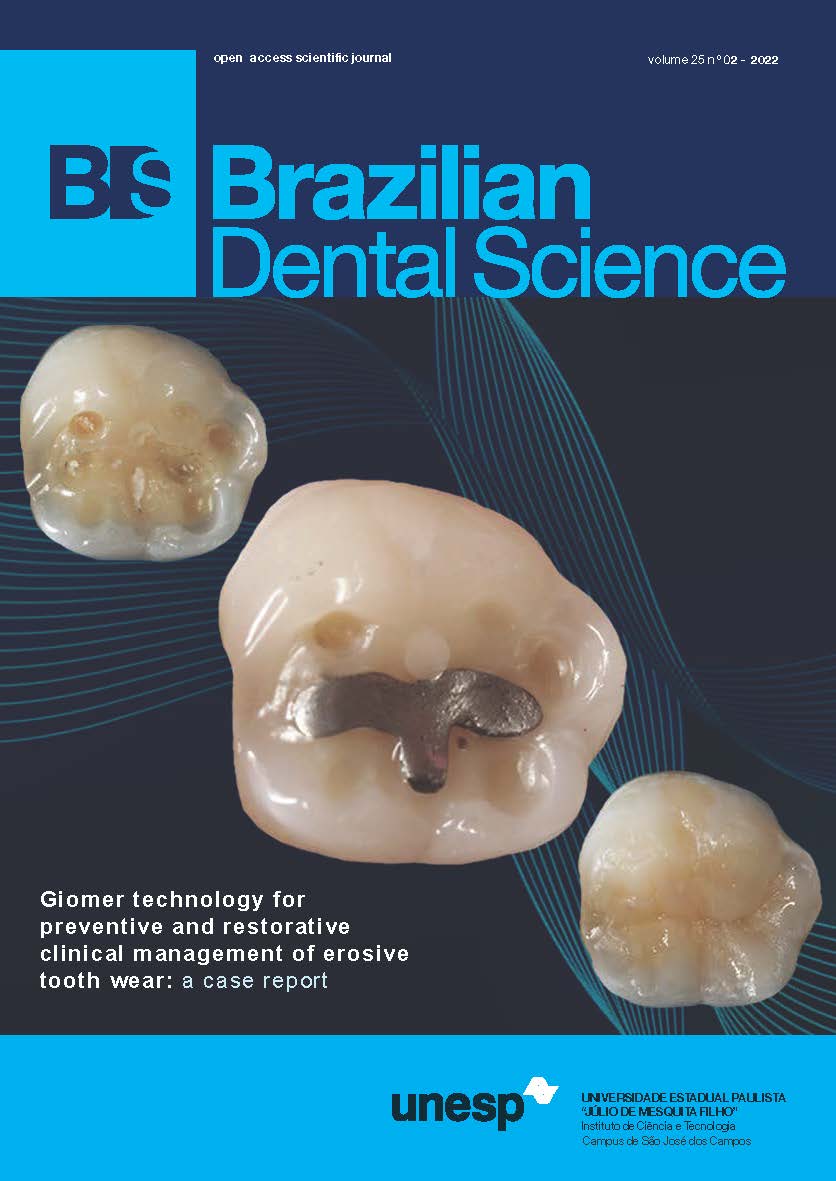Knowledge of dentistry students on bisphosphonate-related osteonecrosis of the jaw
DOI:
https://doi.org/10.4322/bds.2022.e2932Abstract
Objective: Bisphosphonates are anti-resorptive drugs used in the control and treatment of calcium and bone
metabolism disorders. Despite their high clinical efficacy, these drugs have been associated with bisphosphonaterelated
osteonecrosis of the jaw. The goal of this study is to evaluate the knowledge of final year undergraduate
dentistry students on bisphosphonate-related osteonecrosis of the jaw. Material and Methods: A sample of 100
students from private institutions in the state of São Paulo was invited to complete a questionnaire relating to
bisphosphonates and the risk factors associated with the development of osteonecrosis of the jaws. Results: 66%
of the students did not recognize any bisphosphonate (p=0.0019) and 79% did not recognize their trademark
names (p<0.0001). 60% of the students recognized osteonecrosis of the jaws as a side effect of bisphosphonates
(p<0.0001) and 56% identified at least one risk factor associated with the drug that may contribute to the side effect
(p<0.0001). 66% of the students stated that their course did not provide any lectures on the topic (p<0.0001).
Conclusion: The knowledge of dentistry students about bisphosphonates and bisphosphonate-related osteonecrosis of
the jaw is variable. This may be related to an inadequate discussion of this topic during their undergraduate studies.
KEYWORDS
Bisphosphonates; Osteonecrosis; Dentistry students.
Downloads
Downloads
Published
How to Cite
Issue
Section
License
Brazilian Dental Science uses the Creative Commons (CC-BY 4.0) license, thus preserving the integrity of articles in an open access environment. The journal allows the author to retain publishing rights without restrictions.
=================




























